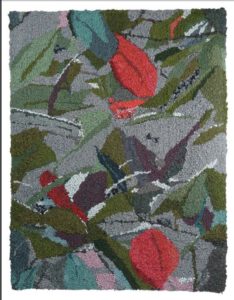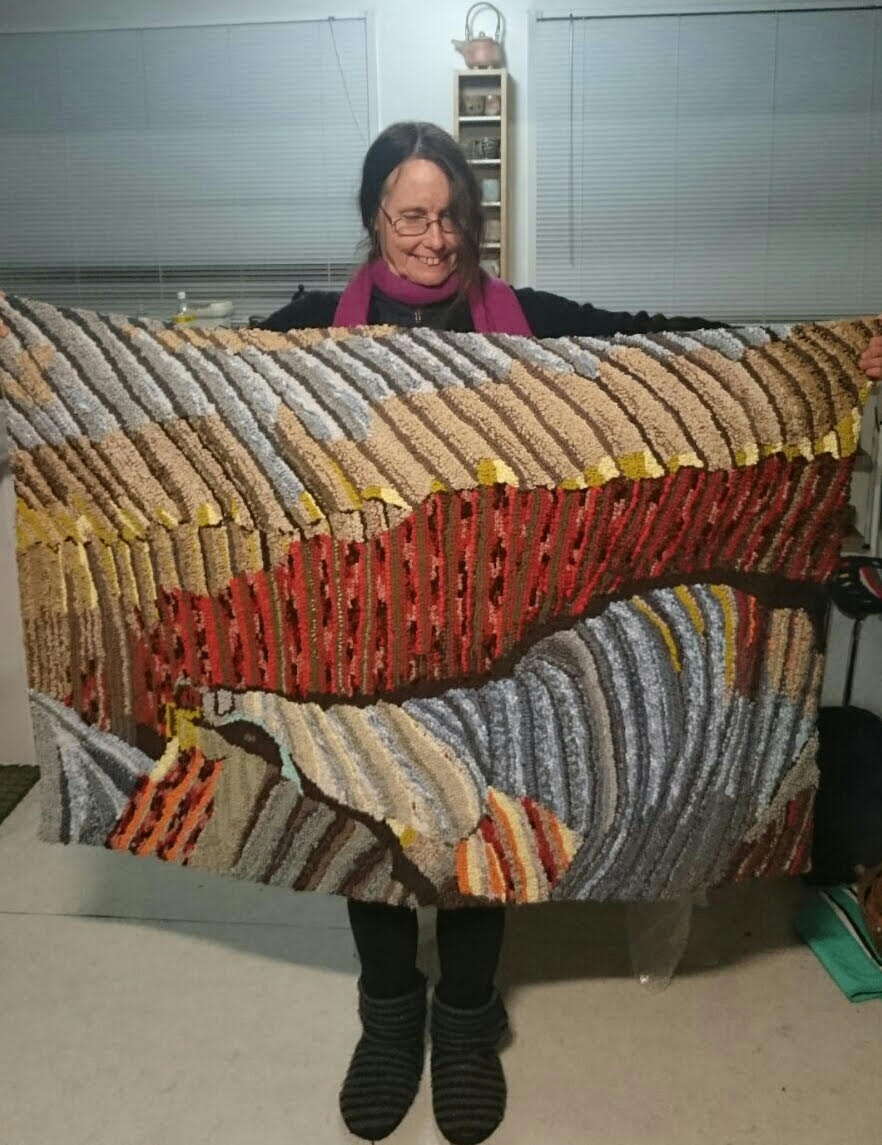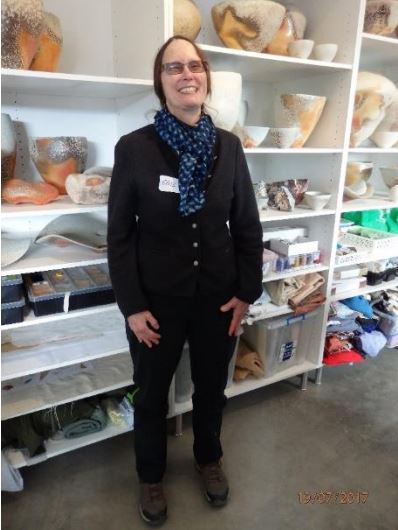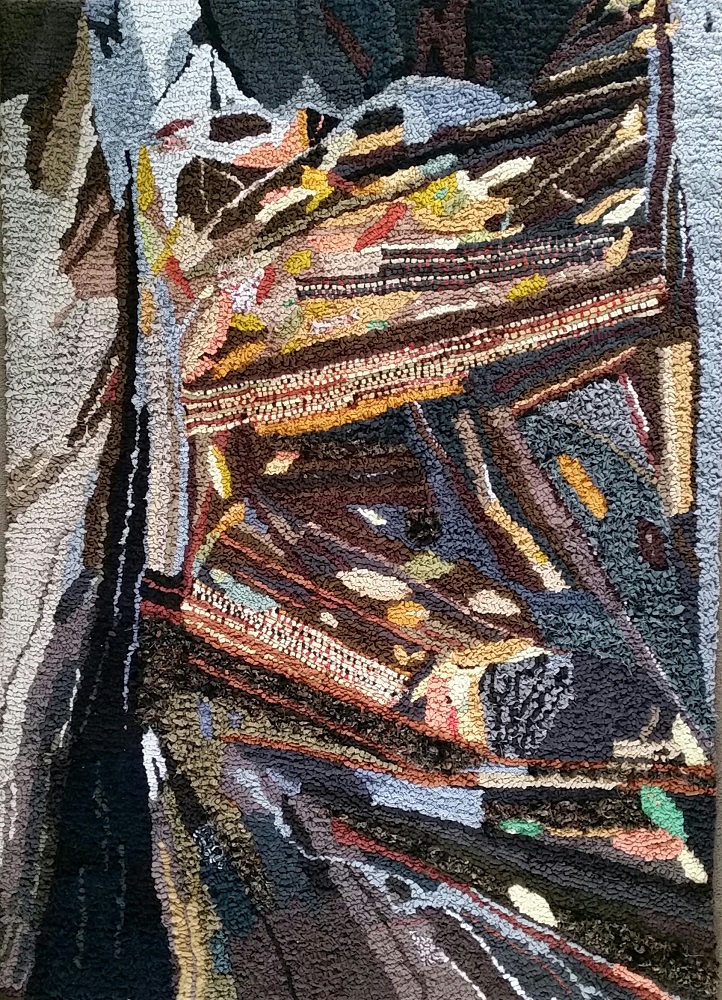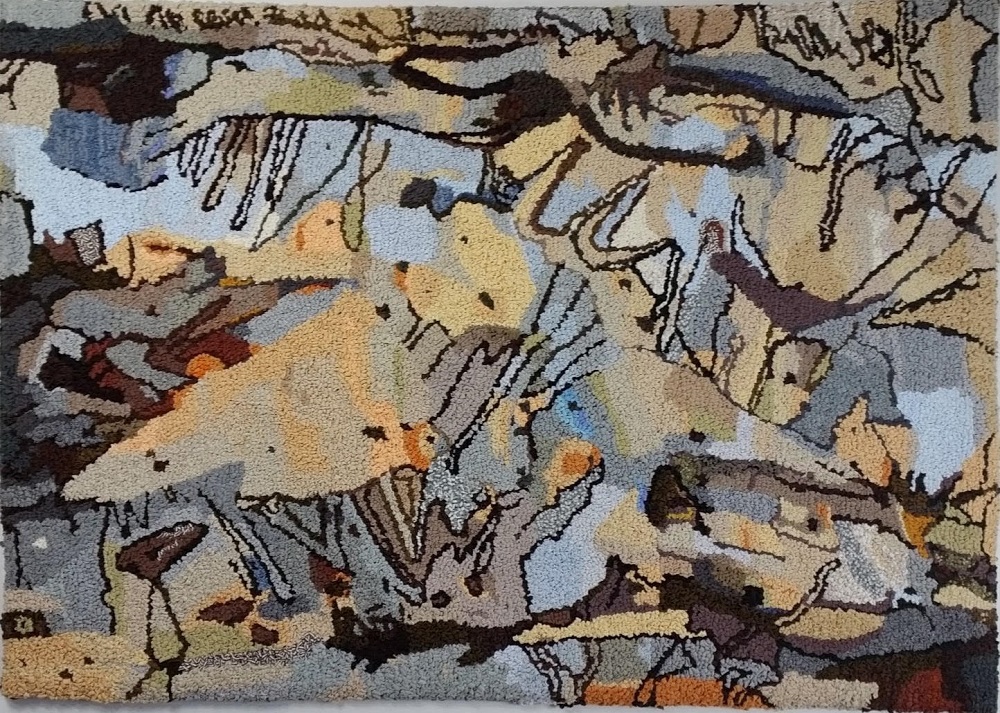ISSN 2007-001X 28th January 2020
 The danger is not over yet, but some areas have had a reprieve, even some glorious rain!
The danger is not over yet, but some areas have had a reprieve, even some glorious rain!
This Blog contains excerpts from the Facebook pages and emails of Guild members affected by the bushfires. There are many reports on TV and in newspapers, but what follows are unedited reports from those involved.
Miriam Miller was forced to evacuate her home at Narrawilly again on 23rd January – Miriam says:
“Strange things help – Robert planted sunflowers as he always does around my house. None of them came up this year because of the drought. So there was a bare dry piece of ground in the paddock in front of my garden bed with the roses, which was covered with thick wood chips. If this garden had gone so would my verandah and my house, so thank you drought. “
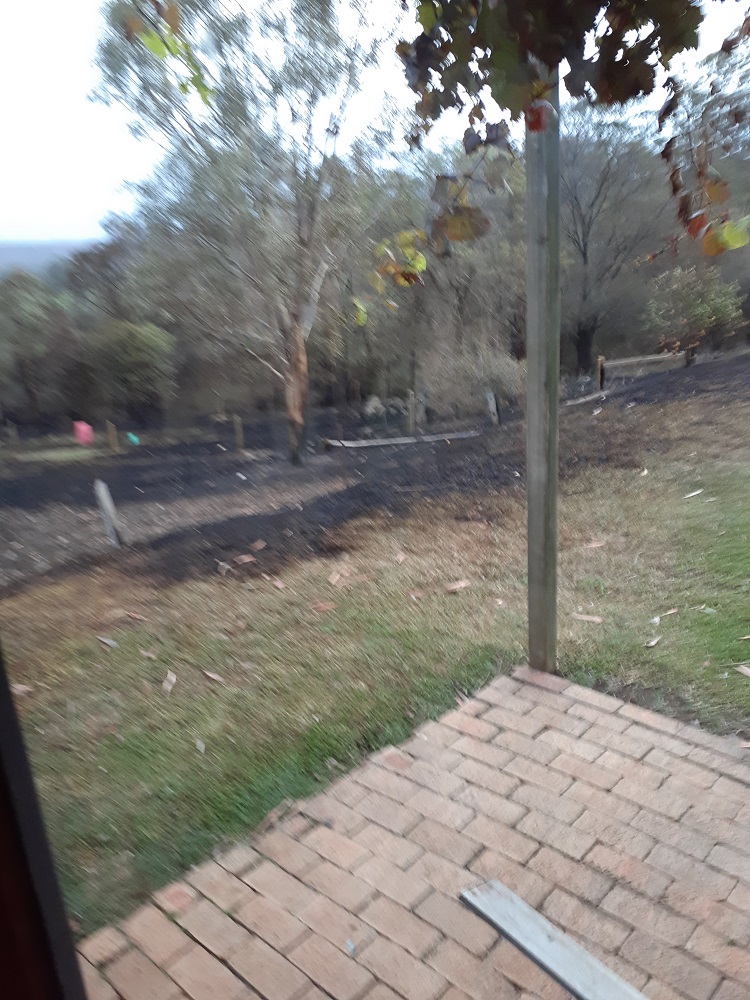
Editor: Unfortunately, this news of more fires comes on the heels of the Good News from Carey-Ann at Robert Miller’s Narrawilly Farm ….
“The good news is that we and the team are safe and uninjured, and the old farmhouse and the dairy plant are intact. The milking herd was well protected although some of the animals in the dry herd are experiencing difficulties associated with drought, bushfire smoke, heat and environmental stress. They are being monitored and, where relevant, treated.”
…… Also from Carey-Ann
“a Timeline of a Fire – at Narrawilly (photographs, taken by Robert and Carey-Ann), document our growing disquiet morphing into anxiety and then horror as fire arrived on New Year’s Eve and returned, four days later, on 4 January.)
Some of what was experienced by Rob and the team these past few weeks. Photographic evidence of damage done to the farm’s natural and physical infrastructure is also available here.
Across the eastern seaboard of Australia, regional communities have been devastated by these out-of-control bushfires. Many people have lost a lot more than we have. Houses can be rebuilt but not everything lost is tangible or replaceable with a credit card. The psychological consequences, for thousands of regional Australians in dozens of regional towns and villages, will persist for years to come. We are very grateful for people’s best wishes, small acts of kindness, and donations — from homemade chocolate brownies through to generous cash donations, and our appreciation will only grow over time, when we have time to reflect on what has happened these past few weeks.
I would also like you to know this: during the course of 24 hours, stretching from mid-afternoon on 4 January 2020 to sunrise of 5 January 2020, Rob and a handful of locals (which included our dairy farming neighbours, the Andersons) worked with basic infrastructure to prevent the fire in the rainforest breaking out of the gully. They fought for hours on end to stop fire and embers from reaching houses on Stony Hill Lane (including Miriam’s timber house) and raging through to Milton village. As an eye witness to what they did that night, I can tell you that they battled that canopy fire alone. They did not have the luxury of evacuating to a safe location. They did not sleep that night or the next. There were no fire-fighters or fire-engines available to protect sleeping residents in Milton and surrounds. What Milton village residents still do not realise is that it was Rob and the Andersons (Brian, Janine, their sons, their nephew and brother-in-law), along with a neighbour’s son, who held that fire in check. If that rainforest fire had not been contained within the gully, nothing in Stony Hill Lane would remain today. Theirs was an act of extraordinary bravery and determination.”
Editor: We are now seeing “Open for Business” reports on TV from the affected areas asking people to return to these country areas so business and livelihoods can return to normal – How can that be when the danger has not passed? I asked Carey-Ann what her thoughts were on this since there is still such a fire risk and communities are so devastated and she said ……
“Local newspapers (e.g. see South Coast Register on Kangaroo Valley and Southern Highlands) are writing of the need for resilience (among the victims) and consumption (among the tourists). It is understandable, up to a point, that certain small businesses want tourists back now.
But where is the line between consumption-tourism as a form of support and providing a respectful amount of time for victims to mourn their dead, their losses and their way of life? And who gets to draw that line in the sand?
It should come as no surprise to anyone when bushfire-affected locals, whose houses and streets were incinerated or damaged, react angrily to cars of Instagram-ing strangers snapping photographs of their pain and despair. (We have heard of this happening in Conjola recently.) I wonder if those who promote unrestrained consumer capitalism in bushfire areas have thought of how to handle that potential for grief-related conflict? I wonder if it will entrench divides between Townies and country people? Somehow I suspect that it will be the locals who are told to be “resilient”, appreciative of the tourist dollar, and respectful. When does that become docility?”
Editor: Which brings up the subject of mental health in these areas – we’ve all heard of PTSD, but what about Continuous Traumatic Stress Disorder (CTSD), which is a sub-category of PTSD?
Carey-Ann said “I have spoken to Rob about CTSD among bushfire-affected dairy farming communities. I see signs of it among this particular community. Fortunately, some academics are already thinking and writing about eco-anxiety. I hope they will consider the link between CTSD and out of control bushfires which return again and again.”
Editor: Still in NEW SOUTH WALES – Conditions are similar at Mongarlowe in the Braidwood area; except they have had some rain! With her permission, here’s some of the images shared on Facebook by Gail Nichols …..
Jan 03: When I think back to how bad we thought things were here in late November, we had no idea what we’d be facing by the New Year. I keep clinging to a belief that this has to end someday. Surely it will rain again.
Jan 4: For all my friends and family following my posts on our ongoing fire situation. It’s hard to believe things could get worse but today is forecast as yet another nightmare. If you want the details here is this morning’s ABC news story.
With massive fires to the north and south of us, into Victoria and even across to Kangaroo Island it’s difficult to know where to start in telling about it this morning. So, I’ll begin with what’s local. We are ok. Apart from putting out a neighbour’s grass fire that ran to our fence, our property was untouched yesterday. That doesn’t mean we weren’t threatened. Fire in pine windrows on property to our west was throwing us flying bark etc. Late in the day the southerly wind change came in like a steam train, blasting that fire to the north toward Mongarlowe village. Today we will be catching up with neighbours and pitching in where we can help. So many other communities in the Braidwood area were impacted yesterday. We are still waiting for the rain that would put at end to this.
Here at home we are prepared to defend yet again, getting well practiced at this. At least we are now well surrounded by burnt out areas and lower fuel loads which should give us some protection. Hoping our locality is spared this time but fearing for what may happen overall.
 Jan 08: RFS crews are getting a lot of well deserved kudos. But note also the work being done by SES (State Emergency Service) volunteers. This crew of 8 from Queanbeyan turned up this morning, felled a number of fire damaged trees around our house, cut up and stacked the bits, all with smiles on their faces. Great work, can’t praise them enough
Jan 08: RFS crews are getting a lot of well deserved kudos. But note also the work being done by SES (State Emergency Service) volunteers. This crew of 8 from Queanbeyan turned up this morning, felled a number of fire damaged trees around our house, cut up and stacked the bits, all with smiles on their faces. Great work, can’t praise them enough
 Jan 09: A couple of refired pots emerged from the ashes and cleaned up ok.
Jan 09: A couple of refired pots emerged from the ashes and cleaned up ok.
Jan 10: A young red necked wallaby eating pellets from one of my old soda glazed platters. He/she only just emerged from mum’s pouch before the fires started impacting here. What a welcome to the world. As for that singed pine trunk, I know some potter friends who would be jealous of those reds.
Jan 15: Painting with fire – Amongst the gems of the ‘firing’ are these pieces of sheet metal that had been draped over a pile of hardwood logs. It gives a whole new meaning to what I used to call ‘painting with fire’.
Jan 16: Rain Rain Rain! What a glorious afternoon.
 In the midst of all the black, a puddle of water. Will this weekend see these pots finally submerged? Watch this space.
In the midst of all the black, a puddle of water. Will this weekend see these pots finally submerged? Watch this space.
Jan 18: 61mm of rain over the past 3 days and more coming! The puddle in the dam is growing. The Charleys Forest Fire, which was our immediate threat, is under control. Our brigade station is reverting to local use. My rug making gear has returned from its evacuation refuge and is back in the studio. New green grass is making itself visible. Time to start thinking about some normality.
 Jan 19: When there’s little grass to be found,carrots, sweet
Jan 19: When there’s little grass to be found,carrots, sweet  potato and kibble pellets are pretty tasty, and when water is scarce a bowl of it makes a great swimming pool. The condition of local wildlife at our feeding stations has improved noticeably in the past couple weeks.
potato and kibble pellets are pretty tasty, and when water is scarce a bowl of it makes a great swimming pool. The condition of local wildlife at our feeding stations has improved noticeably in the past couple weeks.
Thanks again to the Native Animal Rescue Group for their support.
 Jan 20: Nice to see some green happening again
Jan 20: Nice to see some green happening again
Jan 24: Gail says: The summer is far from over, there are still fires about, and we need much more rain. I am currently having some time off from firefighting as my lungs need a break. But there is so much smoke and dust in the air that’s hard to manage anywhere around here. We just keep hoping for some good extended rain. At least there is green grass appearing so our landscape is not just that devastating black. That’s reassuring.
VICTORIA: There are no reports of damage from members there – fortunately all are safe and out of the fire zones.
SOUTH AUSTRALIA is another matter; Sue Gilmartin arrived in Perth on 10th January and gave firsthand information about her host’s property, in the Adelaide hills, safe  but still under threat – however, while there she didn’t have to take refuge in the damp sprout fields which was their planned defense. Friends of her hosts weren’t so fortunate, one family lost everything! Escaping only with their lives.
but still under threat – however, while there she didn’t have to take refuge in the damp sprout fields which was their planned defense. Friends of her hosts weren’t so fortunate, one family lost everything! Escaping only with their lives.
Friends on Kangaroo Island were also affected, with another family losing everything.
A report in the Adelaide newspaper tells of this King Island resident who made a miraculous escape.
Guild Members in Strathalbyn – an area visited by many rug hookers (TIGHR 2012) are reported to be safe.
WESTERN AUSTRALIA has also been impacted by bushfires, to the north and south. After New Years Day Sue Gilmartin from the UK set off to cross the Nullarbor (Adelaide to Perth) on a 10 day camping trip with a small tour group – Sue said 3 days in, after having had the most amazing time sleeping in swags under the stars, the organizers were forced to abandon the trip and return to Adelaide, as the border between SA and WA was closed due to raging fires through the southern area of WA.
The only paved road linking the east and west coasts of Australia was closed for 12 days causing havoc with holiday travelers and freight line truckers. Across this area small towns are shown on maps but they’re virtually only petrol(gas) stations with a cafe and in some places very “basic” motel units – none of these “towns” were prepared with supplies (water or food) to support the hundreds of people trapped at each of them, even with supplies being flown in by small planes and helicopters.
West of the SA/WA border the road is widen in places to create a landing strip. It’s a little disconcerting as you’re driving along and you see the “aircraft landing” warning signs makes you wonder how much notice you’d get of an airplane attempting to land?

Through that 12 day period police strenuously enforced the road closures due to a horrendous situation in 2007 when three truckers were burnt to death in a bushfire after a road closure was lifted prematurely.
They couldn’t say when the road would be opened, so Sue finally resorted to purchasing an airline ticket and spent a week with me in Perth. Her aim was to see as much textile work and visit as many textile groups and galleries as possible. Unfortunately most of the Galleries were closed for the Christmas Holidays and most groups were on holiday break. Sue did make it to a meeting of the Wanneroo Rugmakers 
and while there visited the “Home” Exhibition on at the Wanneroo Gallery.
Baskets by Courtney Hill-Aaron Koolark Collection (6) Natural fibres, emu feathers, ochre pigment from Country to colour natural fibres.
Totems by Val Shaw.
The Wanneroo Rugmakers first wall hanging can be seen in the adjoining room.
This followed by a visit to Nalda Searles home – Sue and Nalda have mutual friends in Kalgoorlie – so a very pleasant afternoon was spent listening to Nalda tell stories  about her work.
about her work.
We took a boat cruise up the Swan River to the Sandalford Winery which involved wine tasting on the boat, a delicious lunch and more wine tasting at the winery – good job we took the train into town to catch the boat.
Another day was crammed full with a visit to the Goods Shed to view “The Alchemist”  and on to Fremantle to visit the Spare Parts Puppet Theatre, now the home of marionettes donated to the Theatre by Stella Edmundson of the Sunshine Coast Textile Art Group. The Kidogo Gallery was closed so instead we toured the Shipwreck Museum.
and on to Fremantle to visit the Spare Parts Puppet Theatre, now the home of marionettes donated to the Theatre by Stella Edmundson of the Sunshine Coast Textile Art Group. The Kidogo Gallery was closed so instead we toured the Shipwreck Museum.
QUEENSLAND: This report started about bushfires and ends with reports of floods in Queensland and in CANBERRA, hail the size of golf balls!
Maggie Whyte, Guild Pres. said she was on her way back to Canberra from a trip to the coast when the storm hit, so fortunately missed that experience – an auto insurers nightmare. Images could be seen on TV of carparks full of cars with shattered windows and car bodies peppered with dents where they had been pummelled by the hail.
Through all this wild weather there have been moments of creative inspiration, friends connecting with friends and help coming from unexpected places – so many people touched by the devastation and others wanting to help.
Now there’s a fine line to tread to support the businesses that are left in tact while respecting the privacy of bushfire victims.
Hopefully, my next post as your Guild Editor, will be less of a weather report, with more emphasis on the art and craft of rug making. ![]()












